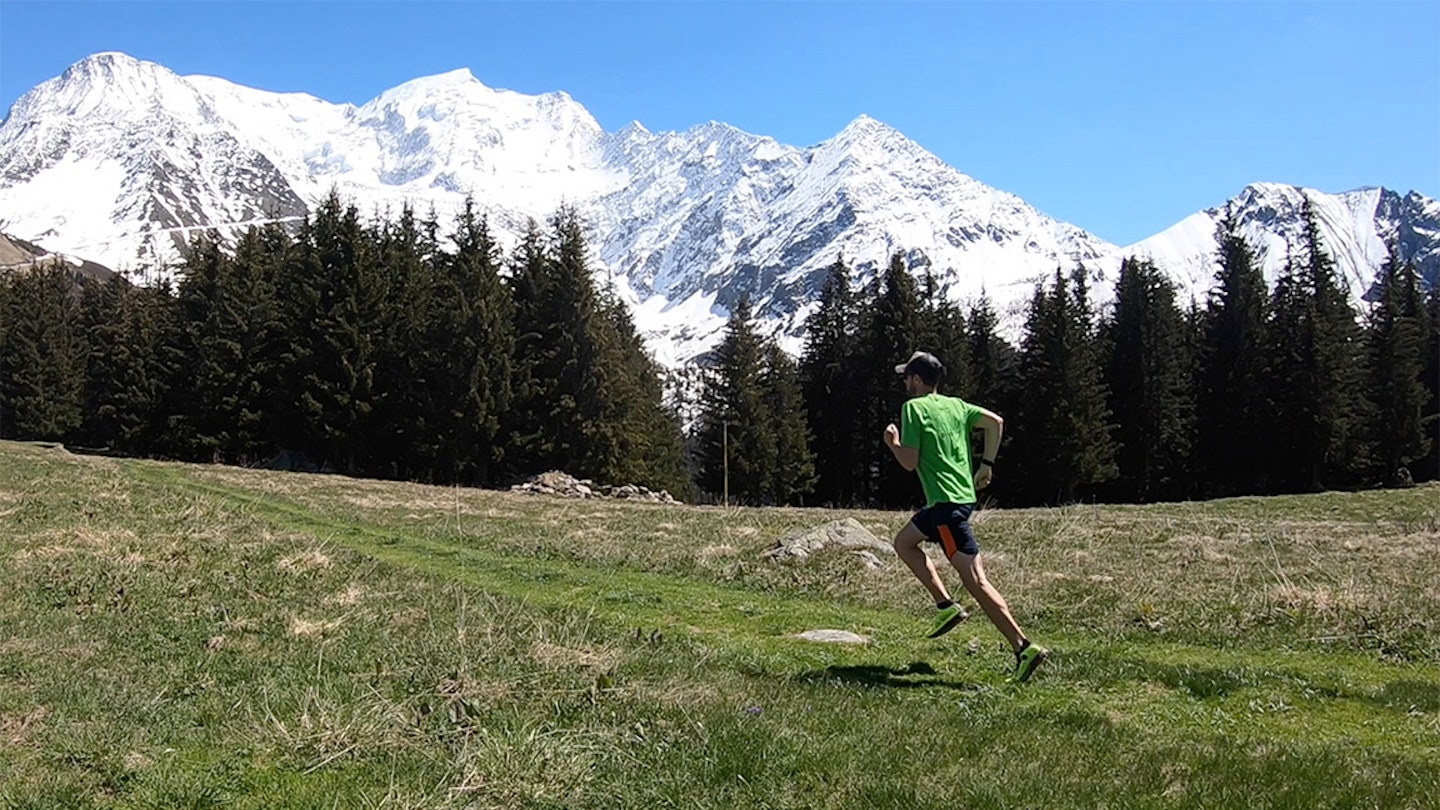Have you ever run past a footpath and wondered where it would take you? Here we take a look at how to transition from road to trail, including considering the physical and mental benefits, how to get started and find routes, keeping safe on the trail, and technique.
Trail running is probably one of the fastest growing areas of running and there some really good reasons why. It’s hard not to be inspired by the images and stories of world-famous trail runners such as Kilian Jornet or Courtney Dauwalter.
Epic backdrops, specialist run kit, an identity tied into adventure and freedom, combined with a supportive community, it’s hard not to consider giving it a go. Whether you’re thinking about moving into the world of trail, or perhaps only want to mix it in with your road running, it will not only make you a stronger runner, but also a happier one. Here’s our guide on how to make the transition from road to trail running.
Why make the move to trail running?

Picure this - you're running freely down a trail, trees flashing past you, focussed on the moment, with fresh air filling your lungs and adrenaline pumping. Trail running is probably the most immersive form of running, which combines experiencing the raw beauty of nature and satisfies our natural curiosities to explore what's around us.
Let's start with the physical benefits. Traversing nature with different terrain and topography makes for an all body workout, increasing strength and endurance not only in your legs but also core and arms. Similarly, those downhill trails improve your reaction times and proprioception.
Running uphill improves running form and cadence. The varied terrain makes each footfall different, which is great for avoiding repetitive injury as well as improving foot strength. Trail running provides less impact on joints compared to road running, this is due to the softer surfaces and also the requirement for muscles to switch on more readily.
Secondly, let's talk about the mental benefits. Trail running demands us to live in the moment, and that concentration on the trail ahead is meditative (it can also be exhausting at times). It provides us with the space to destress and forget about worries. While appreciating the mindfulness of the moment, you may also recognise the mental toughness that’s required to plough through trails on cold, wet and wintry days. Again, perfect for giving you that extra mental edge for digging deeper when the dreaded wall hits in endurance runs.
The other side of being in the big outdoors is not just the fresh air and tranquillity. Did you know that simply walking in nature for fifteen minutes (in comparison to walking in an urban environment) measurably increases our ability to concentrate, plus our mental and physical energy? It can even increase our intrinsic aspirations and goals, such as how we perceive personal growth and decrease extrinsic aspirations such as money, image, and fame. That’s amazing!
Getting started
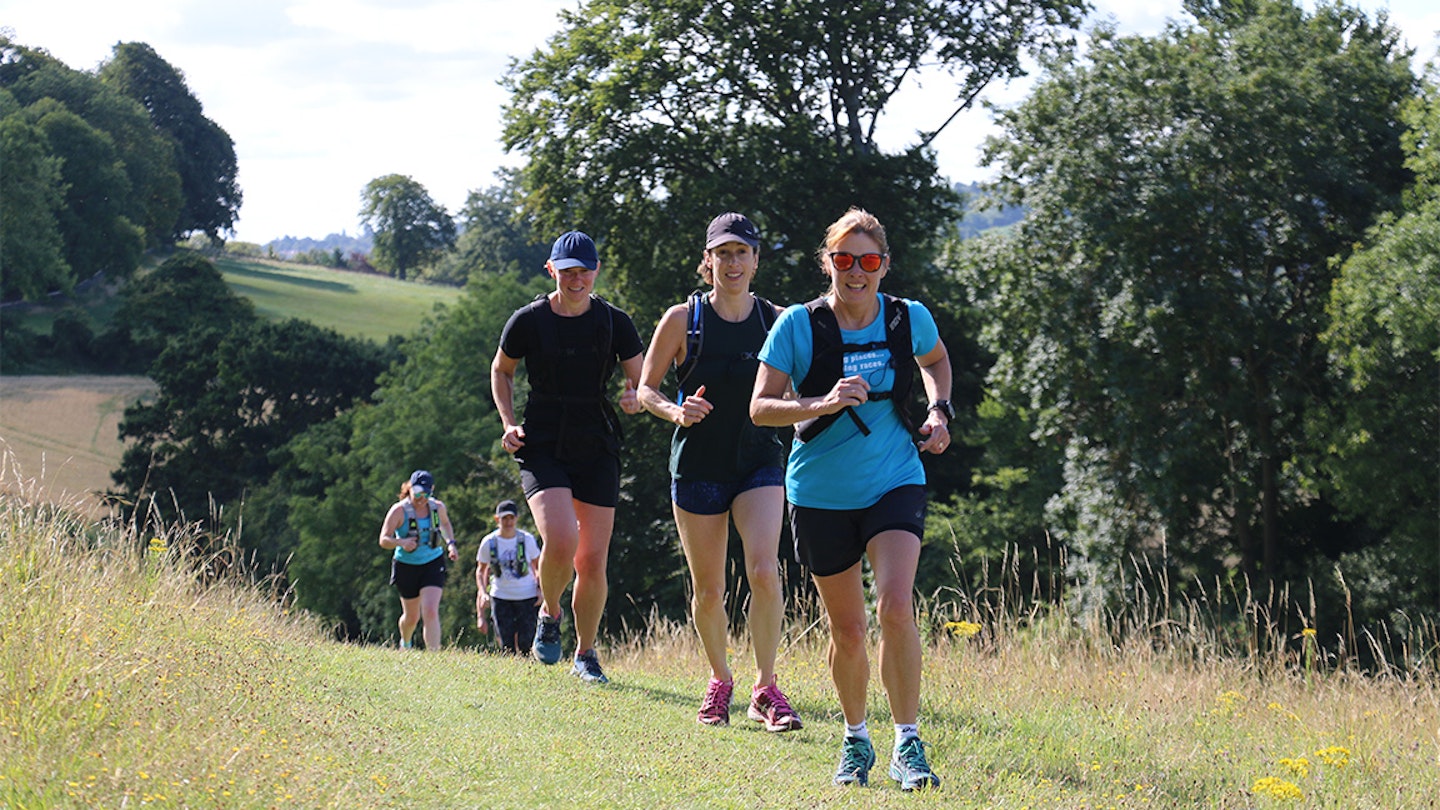
Whatever your level of experience, you can start somewhere. Don’t forget all trail runners started as non-trail runners at some point. Running is not an elite sport, it really is for everyone.
The trail running community is very supportive, so check out local clubs or online groups if you are looking to find others to run with. Organisations such as Run the Wild include trail running instruction on all of their trips and for many, this is great way of being introduced to the sport and provide you with the foundations for trail running.
Start with running in a park or on canal paths and pick days when the weather is reasonable. Run routes that are short and close to home. As you get more comfortable with running footpaths, you’ll naturally want to try more varied terrain and you'll become more prepared for varied weather.
Be mindful that you need to slow your pace down and start off steady. Tripping and falling over is one of the most common hazards on a trail, and it only happens when people either are moving too fast, are not thinking about where they are going, or don’t have the right trail running shoes on their feet.
Finding trails
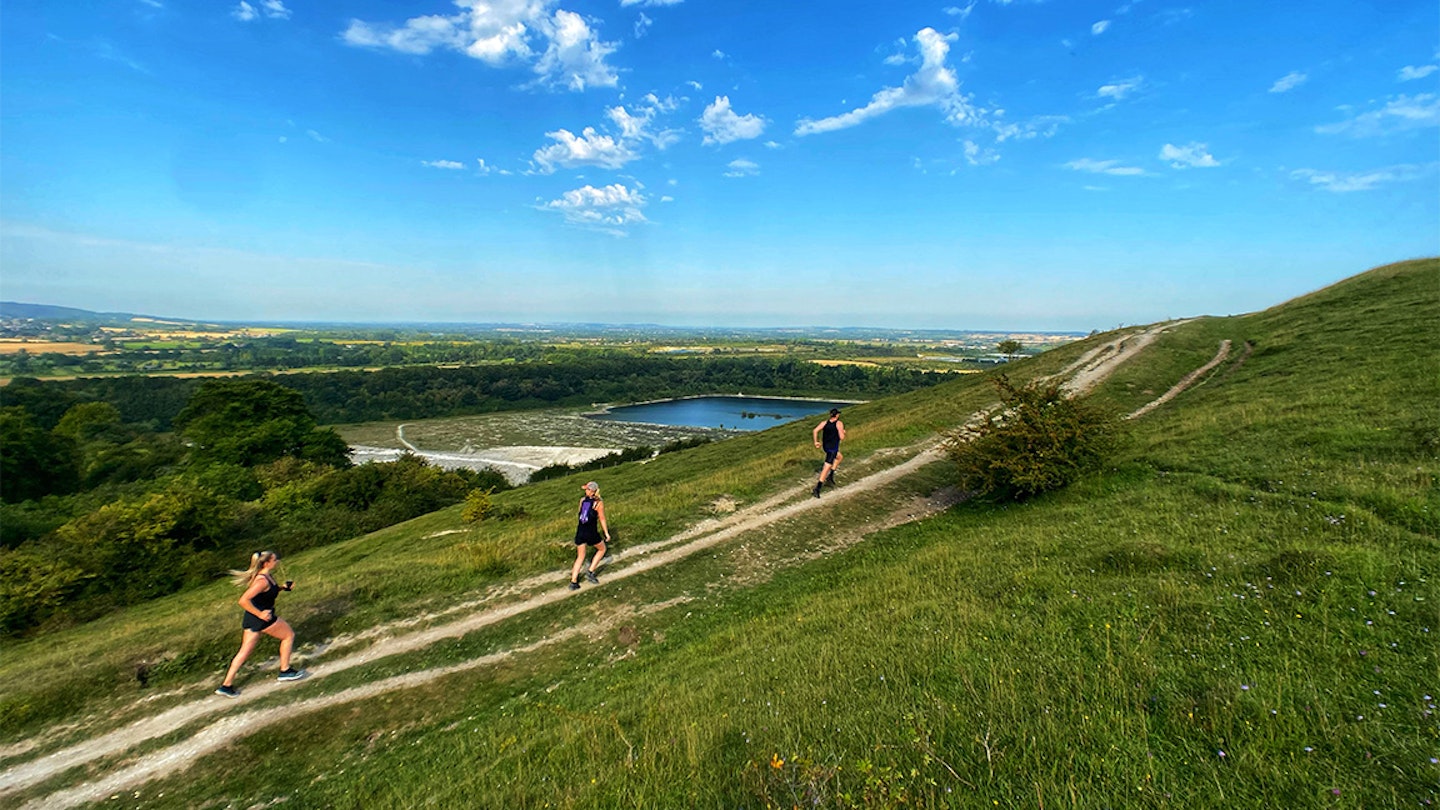
The route options are limitless. Over 80% of the UK is considered to be ‘rural’. You can now step away from the congested roads and pavements, but that can feel daunting and the thought of getting lost possibly terrifying! Start local and you may be surprised at how near you are to finding trail running routes. Just be aware all those handy road signs, street lights, and all the things we take for granted on the road are gone and you need to now begin planning your runs and carrying exytra gear like a running headtorch.
The easiest way to find routes in your local area is check running apps like OS Maps and Strava to see what other trail runners are doing in your area. If you want to create your own route, there are a number of online apps such as Outdoor Active, and Komoot, which allow you to plot out a route and then follow it live when you are running.
Park Run is another great way of finding trails in a controlled environment. The key thing is to build your confidence and competence before taking on bigger challenges. At some point, a map and compass (work out how to use them) alongside an app will be really useful for future running adventures. To really get to grips with your run exploring, check out Run the Wild navigation courses.
Do I need specialist kit?
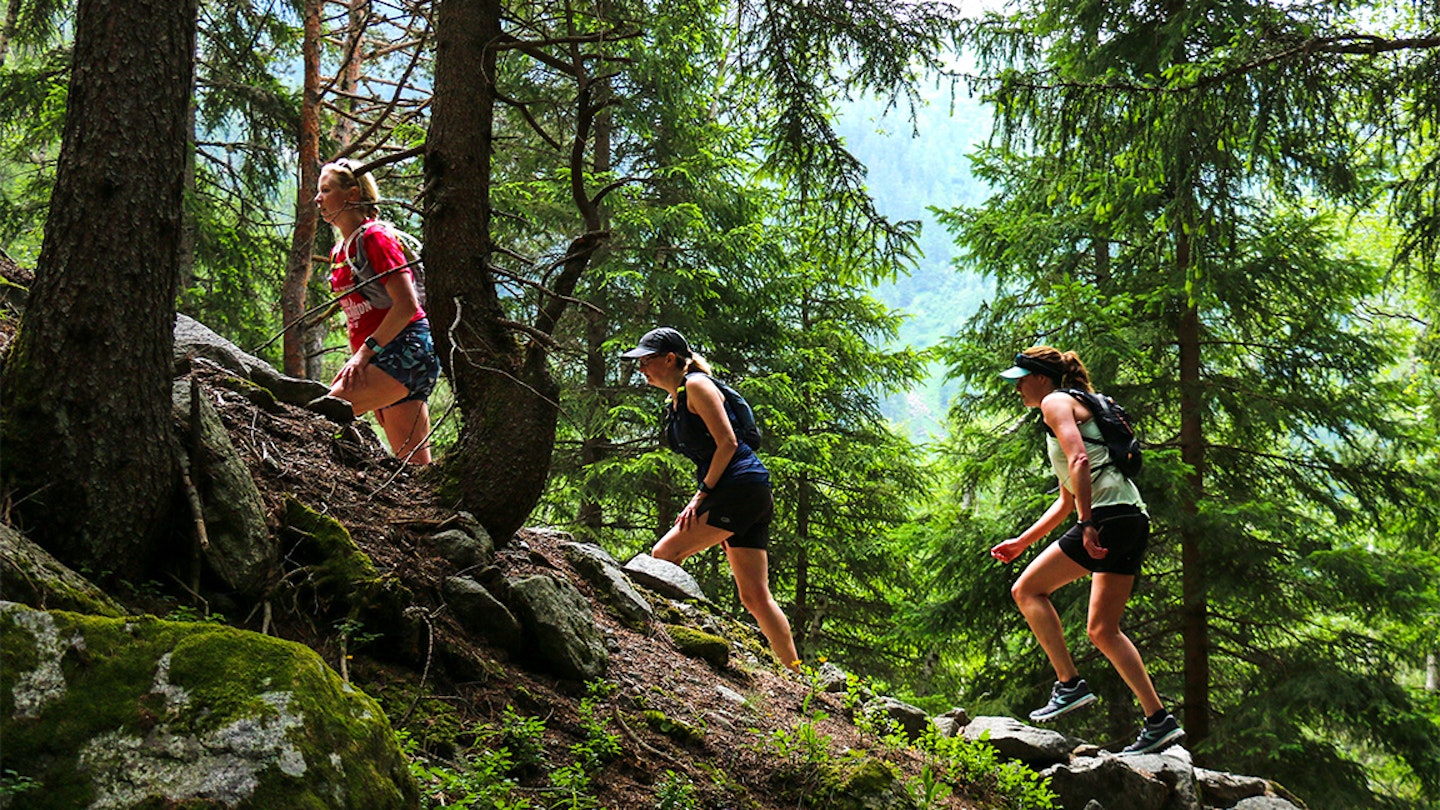
As a trail runner you need to be more self-sufficient than on the streets. Weather, time of year, time of day, remoteness, and route choice all require more self-sufficiency and planning and with that comes kit.
Let’s start with the two essential bits of kit: trail running shoes and a waterproof running jacket.
If you're wondering whether you can just don your road shoes and start exploring off-road, think again. Trail shoes provide that much needed traction to keep you stable and on your feet over uneven and unpredictable terrain. A good pair of trail running shoes will also offer added heal support, strong soles to prevent stones breaking through, specialist grip patterns and lugs to provide traction in the slipperiest mud, robust uppers, tensile strength through the length of the shoe to protect your foot, toe protection and different rubber compounds to grip rock.
These are just some of a long list of features available, here's our full guide to finding the right trail shoe. Whatever the conditions, trail shoes are essential to your stability, safety and confidence on the trail. Be aware, like car tyres, there are different shoes for different terrain and weather conditions. Some winter trail running shoes are made to tackle serious mud and snow, while others will be suited to the runner just starting out. Go for a pair of road to trail running shoes which are comfortable and will cover most conditions, don’t worry about the ones designed for deep mud at first.
Preparing for the weather and not getting cold or wet is key. Your next essential item is a lightweight waterproof jacket. This can be used for not only it’s waterproof qualities, but as a lightweight, warm and windproof jacket layer. Make sure it has a hood, sleeves, and taped seams for waterproofing - this is usually a race requirement too.
The kit list increases with distance and remoteness, but starting out on short close to home runs really only require these two items to get you started. As you get more adventurous you’ll want to invest in a running pack.
Safety on the trails

Trails by their very nature are often more remote than roads or pavements, so getting help if you get lost or injured is more of a challenge. It’s also likely that there will be fewer people using them than the road (a good thing), so some pre-trail run planning is always necessary; be that checking the weather forecast, or plotting your intended route.
Letting people know where you are going and the time frame is essential. Ensure your phone is charged so you can check your location and can still call someone even if you are out for longer than planned. Some run tracking apps like Strava offer a 'beacon' mode where your loved ones can track your real-time, or your running watch may come with 'incident protection' which will recognise when you have a fall or large impact and automatically alert your chosen contacts.
Most of us have lost our 'outdoor sense' that our ancestors took for granted, so it’s important to consider the ‘what ifs’. Even really experienced runners can get into trouble, so pack with you a small first aid kit for longer runs. Consider carrying an emergency snack, energy drink, extra warm base layer, and anything else beneficial to the route you've chosen.
Technique over speed
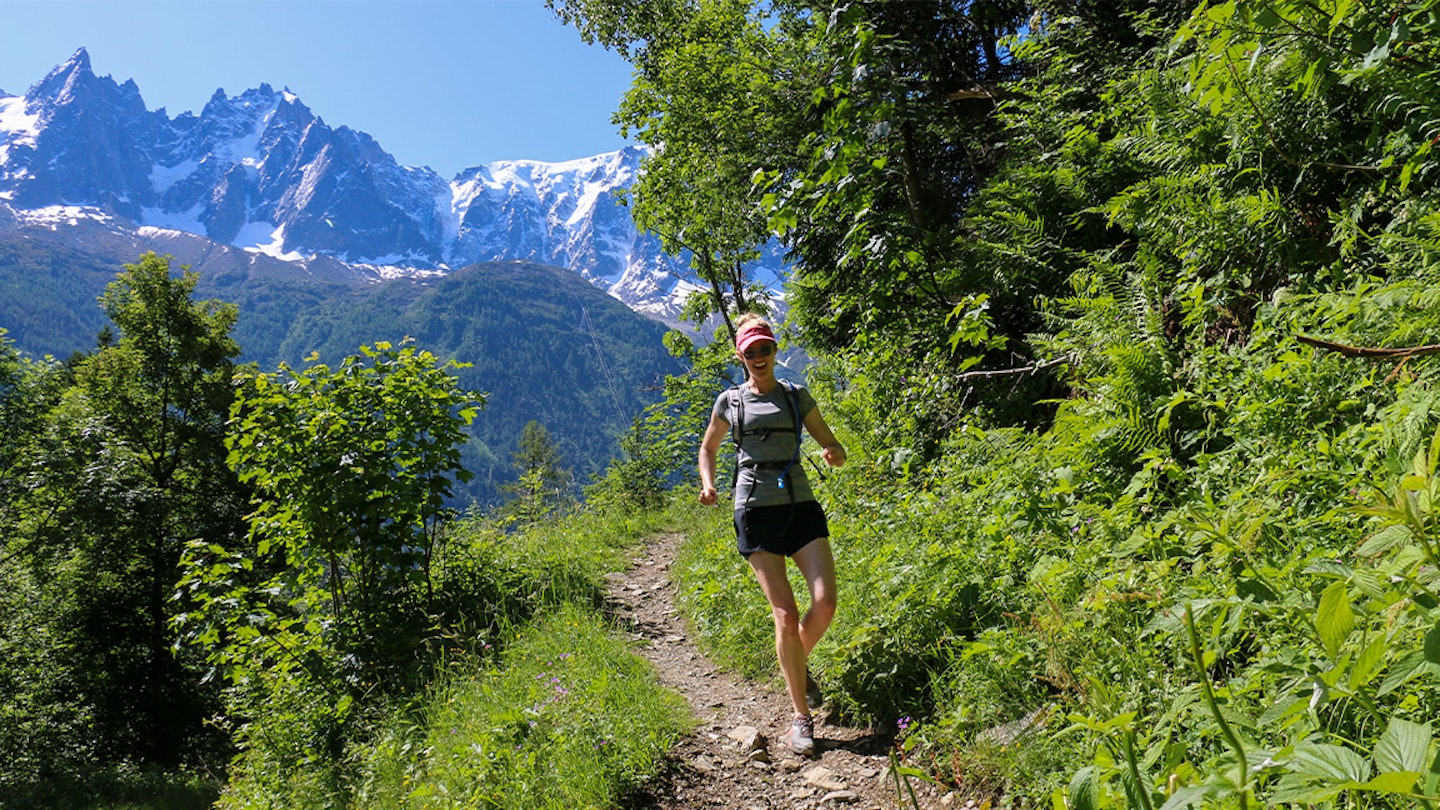
There are a lot of techniques to master in trail running which are not needed on the roads. They improve balance, control at speed and efficiency. A relatively straightforward countryside path is a good place to start, but if you want to head into the mountains or more remote areas, then building up your strength and technique will make sure you stay injury free for longer. The most technically demanding running is downhill as this requires a delicate balance of trying to control yet not fight the effects of gravity. It takes a lot of practice to get it right, but it’s fun learning!
Strength and conditioning
The demands of the trail require you to become a more robust runner. If you want to improve, then you’ll need to do some regular workouts, working your leg muscles with exercises like squats and your core with planks and leg raises. You’ll also need to work on strengthening your ankles to withstand steep downhills and uneven trails. Road running also significantly benefits from strength and conditioning, but trail running demands it.
Are you convinced?
Hopefully you’ve been convinced to get out onto the trails. You don’t need to be running trails all the time if that’s not your thing, but adding a trail run into your training plan every week is going to really benefit your running journey. Trails will add in more variety and are a great substitute to a hill session or track session.
Pro road runners now frequently add in trail running as a form of cross-training to the road. Remember to start slowly, add in strength and conditioning to improve your joint strength (especially for ankles) and most importantly, have fun and enjoy the fresh air and view!
What is Run the Wild?
Simon James founded Run the Wild in 2013, which has now been delivering incredible trail running adventures for over a decade. Our running events include everything from 10km runs in the Chilterns to multi-day running holidays in the Alps. From guided runs to navigation workshops and running coaching – there is something for you wherever you are on your trail running journey!
